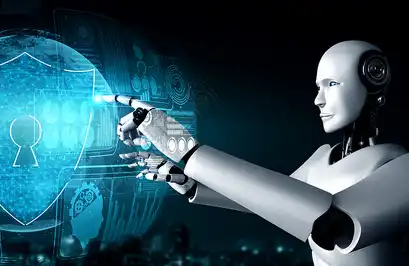Few BRC-20 tokens left for retail investors? 'Bitcoin MEV' is targeting the Mingwen market.
If you are interested in science fiction novels, you must have heard of "The Three-Body Problem" and its "Sophons" - micro particles controlled by the Trisolarans. They unfold protons into two dimensions and etch them with circuits to create supercomputers, which become the ambassadors of the Trisolarans on Earth, monitoring humans and locking down the basic science of the planet.
Now, "Zhi Zi Robot" has arrived in the BRC-20 ecosystem.
As shown in the figure below, there are many inscriptions with a supply of 1 or single digits in the mempool of BRC-20. The reason is that someone has deployed a front-running robot. Whenever a new inscription deployment appears in the mempool, the robot will deploy a similar name (tink) with a supply of 1 and complete the deployment first by paying a high gas fee, making it impossible for others to deploy tokens with the same name.

Creating a small square with a quantity of 1 is the masterpiece of Tink's new creation. Image source: GeniiData
What is the BRC-20 Smart Robot?
And this BRC-20 token sniper robot was deployed by Bitcoin developer Rijndael (@rot13maxi) on October 3rd, inspired by the science fiction novel "The Three-Body Problem", with the name "Sophon".

Before introducing the attack principle of Sophon, we need to first understand the operating rules of BRC-20 tokens. Whether it is deployment (Deploy), minting (Mint), or transfer (Transfer), they all follow the first-come-first-served rule. For deployment (Deploy), if there is a BRC-20 token with the same name already deployed, the first deployment will be considered the only successful deployment.
Related reading: "Binance finally launches ORDI, a guide to understanding the BRC-20 that has been speculated for half a year".
Sophon uses the "first come, first served" and transparent trading rules. The robot monitors the mempool and pays a high gas fee to deploy a token with the same name as soon as it detects a new BRC-20 token deployment. The supply is set to 1, so others cannot obtain the newly deployed token, and the supply of the robot-deployed token is only 1, which cannot be circulated in the market.

However, Rijndael announced on October 27th that it would stop operating Sophon, citing high gas fees. After Sophon ceased operations, Rijndael donated the Bitcoin in its UTXO to opensats.
Although Sophon has only been running for more than 20 days, it has briefly created a deployment oasis for BRC-20 tokens.
Dune board data shows that after Sophon was activated on October 3rd, the number of text-based inscriptions dropped from 49,000 the previous day to 13,700, a decrease of 72%. On October 23rd, the day after Sophon ran out of funds, the number increased from 11,500 to 74,300, an increase of 540%.

The gap is where Sophon is deployed in the deployment phase. Image source: Dune
Ordinals Hub maintainer cbspears (@cbspears) also commented that "since the deployment of Sophon, the number of UTXOs has decreased by more than 10 million, and at the moment he turned off Sophon, the number of UTXOs began to increase. Rijndael is actually saving Bitcoin."
Recently, with the open sourcing of Sophon code by Rijndael, similar sniper robots have started to operate in the mempool of BRC-20. Rijndael stated in an interview, "I believe there is a copy of Sophon running, and it's not me. This is great."
mempool is PVP, BRC-20 stress test
(Note: This content contains English characters and does not require translation.)
There are mixed opinions in the community about the existence of Sophon. Some believe that it is a positive development due to the deployment of the BRC-20 token, while others see it as a revenge of Bitcoin OG to protect Bitcoin from the dust attack of BRC20. Even raph, the chief maintainer of the Ordinals protocol (@raphjaph), jokingly called for the need of Sophon in the comments section of his tweet about the Bitcoin ecosystem.

On the left is a mining machine, and on the right is Liu Cixin's science fiction novel "The Three-Body Problem: The Dark Forest".
However, in the eyes of Rijndael, a deployer of Sophon, he needs to prove to those who support BRC-20 that using Bitcoin as a "global namespace based on block inclusion sorting" is a vulnerable mechanism.
Rijndael calls the mempool of BRC-20 "PVP", which stands for player versus player battle. Due to the first-come-first-served game rules of BRC-20, it is like a real-life MMO game where you need to be constantly vigilant of attacks from other players. Rijndael stated in an interview that "you must assume that there are monsters lurking in the mempool. If your deployment is vulnerable to attacks, the monsters will come and eat your tokens." Here is the source of the interview.
We can donate the bitcoins in UTXO to opensats as a proof that the deployment of Sophon is not for profit, perhaps it can be understood as a kind of pressure test for BRC-20, using Rijndael.
However, it is unknown whether Rijndael's deployment of Sophon is truly for the purpose of perfecting the rules of BRC-20, as the answer he gave when asked why he did it was "for civilization."

MEV on Bitcoin?
"No one is telling me that there is no MEV on Bitcoin anymore," and the existence of Sophon has also sparked discussions in the community about Bitcoin MEV and Private Mempool.
The term MEV originated from Ethereum and was originally an abbreviation for "Miner Extractable Value". After Ethereum transitioned from PoW to PoS, it was renamed "Maximal Extractable Value".
Under the POW mechanism, when a user submits a transaction on the blockchain, the transaction information is not immediately recorded in a block, but is temporarily placed in a public transaction pool for processing, and everyone can see its contents. Arbitrageurs and miners can monitor this transaction pool and use it to maximize profits. For example, during the process of packaging blocks, miners can use their own power to sort the submitted transactions and place their own transactions in front of real users to increase the transaction costs of real users.
Private Mempool usually refers to the memory pool of a specific node that is independent of the public network memory pool. The public network memory pool is a collection of unconfirmed transactions waiting for miners to package and add to the block, while the private mempool is a memory pool maintained solely by a specific miner or network node.
The mempool operation rules of BRC-20 - transaction transparency and first come, first served - can lead to MEV if exploited. Imagine what would happen if more than one Sophon-like frontrunning bot appeared in the mempool of BRC-20?
Welcome to join the official BlockBeats community:
Telegram Subscription Group: https://t.me/theblockbeats
Telegram Discussion Group: https://t.me/BlockBeats_App
Official Twitter Account: https://twitter.com/BlockBeatsAsia


 Forum
Forum Finance
Finance
 Specials
Specials
 On-chain Eco
On-chain Eco
 Entry
Entry
 Podcasts
Podcasts
 Activities
Activities
 OPRR
OPRR









